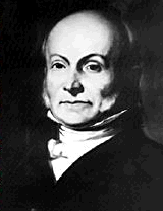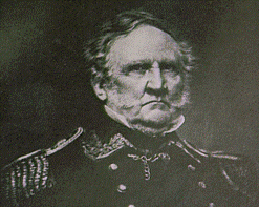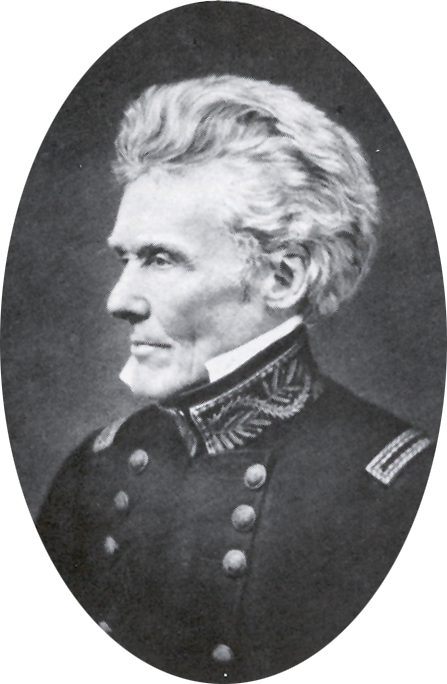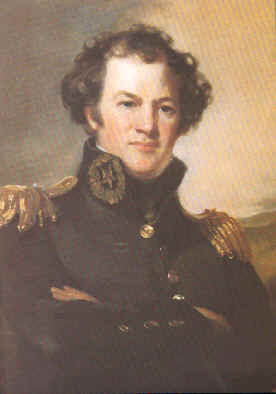When Maj. Gen. Jacob Brown, the Army’s commanding general, died in February 1828, President John Quincy Adams should have chosen as Brown's successor one of the Army's two brigadier generals. But the two–Winfield Scott and Edmund P. Gaines–had denounced each other publicly and for months had been contesting for the position. Their quarrels scandalized the Army and drove Adams to nominate Col. Alexander Macomb, the Chief Engineer, as the Army’s top general.
|

|

|

|
| John Q. Adams |
Winfield Scott |
Edmund P. Gaines |
Macomb was commissioned in the Corps of Engineers in 1802, spent five years in charge of coastal fortifications in the Carolinas and Georgia, and served in the Artillery in the War of 1812. His wartime service won him a brevet major generalcy and a congressional gold medal. After commanding the Third Military District at New York and the Fifth at Detroit, he became Chief Engineer in 1821.
 |
|
| Alexander Macomb |
|
Macomb’s tenure as commanding general (29 May 1828-25 June 1841) was marked by continuing uncertainty about the responsibilities and authority of his position. To secure his seniority over the other two-star brevet major generals, Macomb added a provision in the 1834 Regulations that "the insignia of the major general commanding in chief should be three stars." In the same document he sought to define his relationship to the secretary of war and establish his primacy over the bureau chiefs, including his successor as chief of engineers. This was easier said than done. Most issues were not fully resolved until early the next century.
Macomb also advocated doubling Army strength, increasing enlisted pay, providing relief for widows and orphans, and instituting a regularized officer retirement and replacement system. During his tenure (1840) the Army adopted the castle uniform insignia and first described the Corps’ distinctive Essayons button. Macomb died in office on 25 June 1841. Maj. Gen. Winfield Scott, who had worked hard at mending fences in the intervening thirteen years, was named his successor.
Four other commanding generals, or chiefs of staff as they became known after the Army’s reorganization in 1903, held engineer commissions early in their careers. All transferred to other branches before rising to the top. They were George B. McClellan, Henry W. Halleck, Douglas MacArthur, and Maxwell D. Taylor.
For more information, see William Gardner Bell, Commanding Generals and Chiefs of Staff, 1775-1983 (Washington, D.C.: Center of Military History, U.S. Army, 1983).
* * *
March 2001